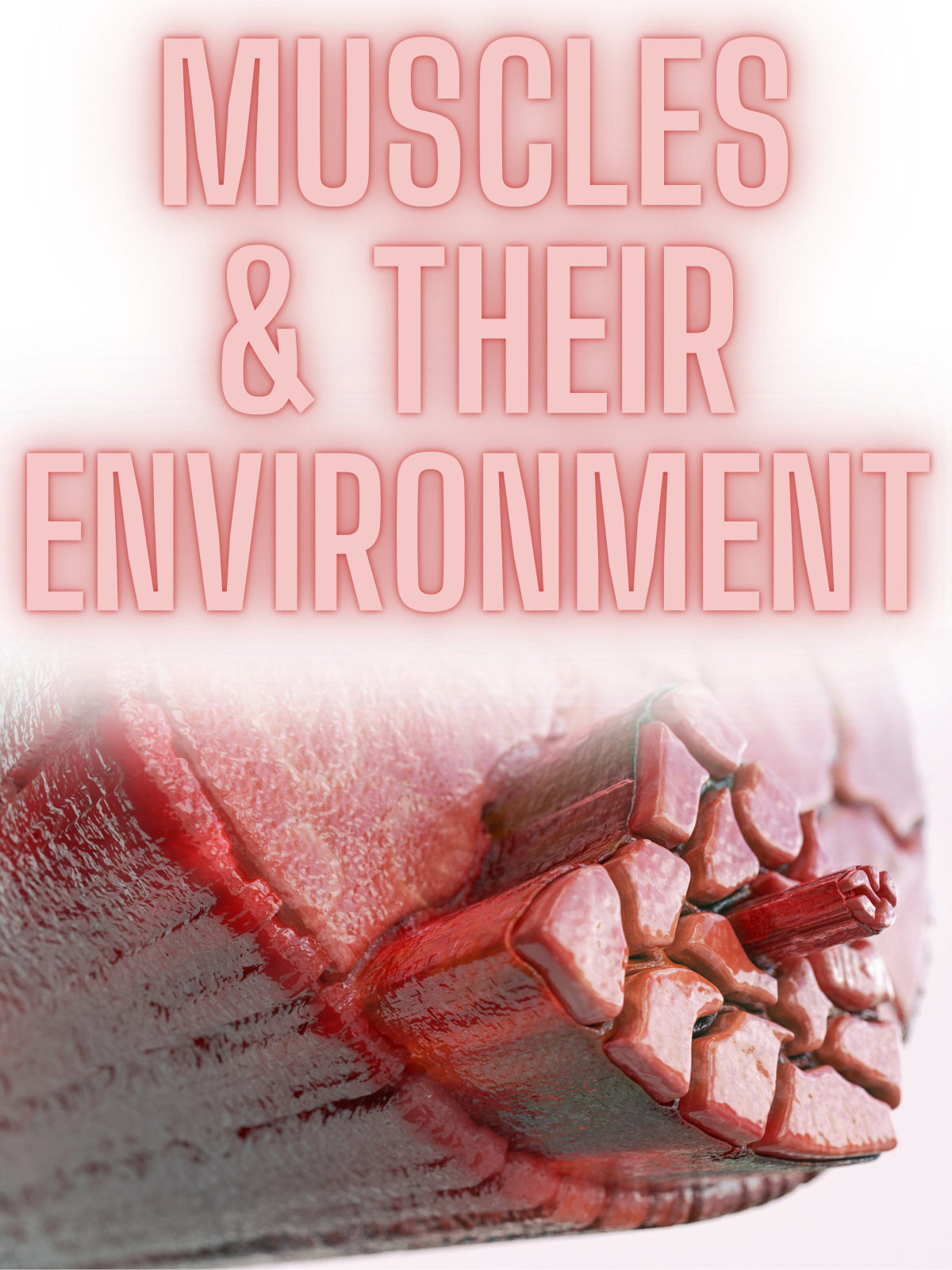Help your muscles THRIVE!
Think about how your mood shifts when you imagine being in a clean work space with lots of natural light versus being in an unclean place without windows. The environment can be the difference between survive and thrive.
Thinking of muscles alone ignores how they are in a system that is completely integrated into their environment - fascia.
A common understanding of where fascia is usually amounts to ‘around muscles,’ however it’s not only around them, it’s through them as well - and in many places filling in all the spaces.
Look at the picture and imagine each numbered scale level of the muscle like a bag that’s in a bigger bag. Many bags have smaller bags within them too. Each bag is made distinct by the fascia around them that both tensions each bag into place, and fills in all of the spaces with a lubricating interface that allow all of these muscular components to move without creating any friction - movement within tension.
1 - Tendon IS fascia! It’s densified fascial sheets, not unlike the deep fascia that gives our body stability.
2 - Epimysium is probably what we think of when we think of fascia - the outer wrapping of the skeletal muscle.
3 - Like epimysium, perimysium is the outer wrapping of inner ‘bags.’
4 & 5 - Within the perimysial ‘bags’ are muscle fibers, and ‘bags’ of fascicles within the fibers, all surrounded by fascia.
6 - Bone also has a fascial wrapping called periosteum that allow for skeletal movement within its tensioned fascial ‘bag.’
Every skeletal muscle is a fractal arrangement of nested, self-similar scales, each surrounded by fascia that is integral to healthy movement.
When a muscle ‘flexes,’ contractile forces bunch the muscle proteins, thickening the region, tensioning the fascia. This is a major shift in how we can imagine muscles working - in real life muscles aren’t shortening or lengthening in isolation, they are changing the tensional balance as they push & pull on the fascia that pulls & pushes back.
Try something: Put one hand around the opposite upper arm and flex your bicep - notice how the whole upper arm thickens. Put your hands around your thigh and put your weight on that leg as if you’re going to stand - notice how the whole thigh thickens. No muscle works alone, and in real life things are far too quantum for the binary idea of muscular antagonism to be anything more than a simplification of the dynamic way our body manages forces.
Doesn’t this paint a different picture? I’d go like to go a step further than stating that muscle is in an environment of fascia: it’s more accurate to say fascia has muscle within it. After all, fascia is the architecture in which muscle, cartilage, and bone grow - and all of that is one integrated system.
